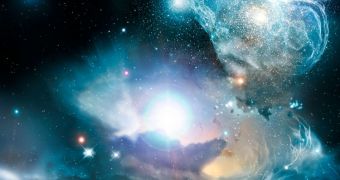Members of the European Space Agency's (ESA) Science Program Committee for implementation decided yesterday, October 4, on the next two science missions the organization will fund and support. The winners were Euclid and the Solar Orbiter.
Primarily, the missions are focused on discovering the nature of dark energy driving universal expansion, as well as on gaining a deeper understanding of the intricate interplays of forces underlying how the Sun functions.
Euclid, currently scheduled for launch in 2019, will be responsible with analyzing the very fabric of the Universe in extreme detail. Its goal will be to learn more about dark energy, which makes up about 75 percent of the entire Cosmos.
On the other hand, the Solar Orbiter will drop in a very close orbit around the Sun starting in 2017. It will fly in a considerably lower orbit than any other previous solar observatory. Its primarily goal is to determine the nature and extent of solar influence on its surroundings.
These two medium-class mission are both part of the ESA Cosmic Vision 2015-2025 Plan. If successful, these science flights might provide us with additional insights into why this solar system supports life, as well as why galaxies in the Universe appear to be flying away from each other.
According to the ESA committee, the Solar Orbiter will launch aboard an Atlas V delivery system, from the Cape Canaveral Air Force Station (CCAFS), in Florida. Its main mission will be to investigate solar winds, studying how the Sun generates and then pushes these particles away from itself.
“Solar Orbiter will be close enough to the Sun to sample this solar wind shortly after it has been ejected from the solar surface, while at the same time observing in great detail the process accelerating the wind on the Sun's surface,” an ESA press release explains.
On the other hand, Euclid will be focusing on mapping and observing the large-scale structure of the Cosmos, including massive galaxies, clusters and superclusters, in addition to galactic walls. The level of accuracy this mission will display will be unparalleled.
According to scientists, the telescope will be able to see more than 10 billion years into the Cosmos' distant history, covering more than 75 percent of its development.
“With the selection of Solar Orbiter and Euclid, the Science Program has once more shown its relevance to pure science and to the concerns of citizens,” explains the Director of ESA Science and Robotic Exploration, Alvaro Giménez.
“Euclid will shed light on the nature of one of the most fundamental forces of the Universe, while Solar Orbiter will help scientists to understand processes, such as coronal mass ejections, that affect Earth's citizens by disrupting, for example, radio communication and power transmission,” he adds.
“It was an arduous dilemma for the Science Programme Committee to choose two from the three excellent candidates. All of them would produce world-class science and would put Europe at the forefront in the respective fields,” Fabio Favata adds.
“Their quality goes to show the creativity and resources of the European scientific community,” adds the expert, who is the head of the Planning Office at the ESA Science Program.

 14 DAY TRIAL //
14 DAY TRIAL //